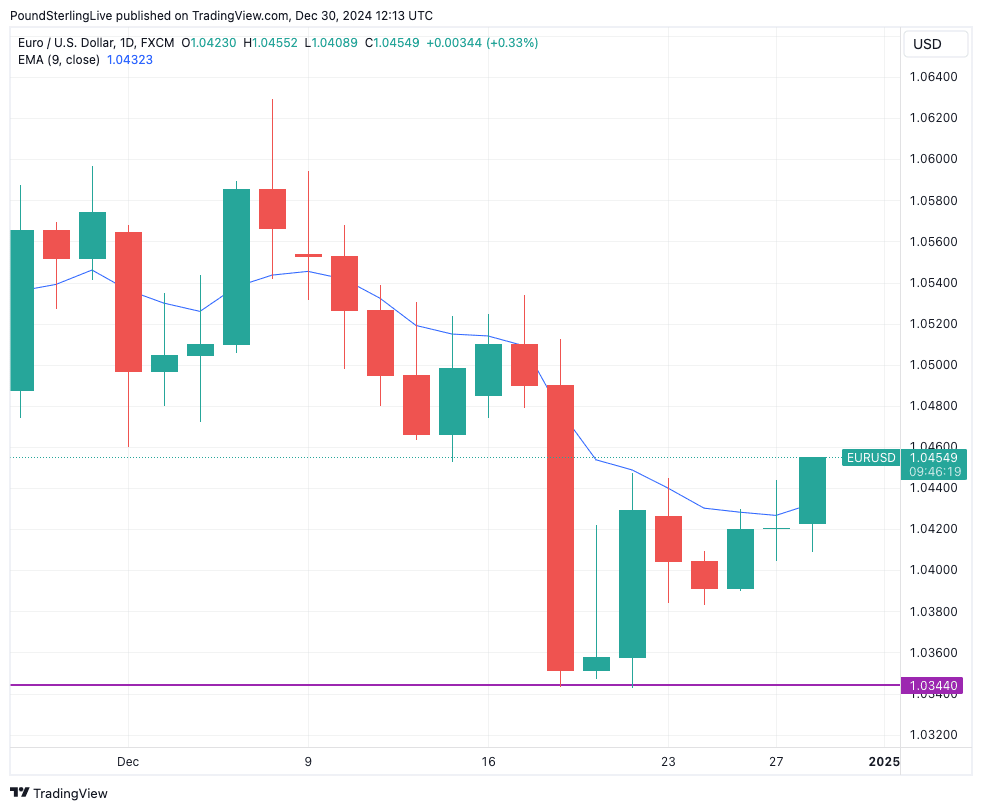Euro-Dollar Braces for Rough January
- Written by: Gary Howes

Image © Adobe Images
January is typically a poor month for the Euro to Dollar exchange rate (EUR/USD).
The Euro is forecast to fall against the Dollar in January, based on seasonal trends.
According to Reuters market analyst Martin Miller, January is a month that is usually negative for that major currency pair.
"EUR/USD seasonal performance since 2000 shows it has fallen in January for 16 of the past 25 years, or 64% of the time. However, seasonality patterns should not be considered in isolation, they need to be corroborated with other factors," he explains.
Although January might result in further losses for the Euro, the single currency enters the turn of the year with some wind in its sails.
The exchange rate has recovered from mid-December lows at 1.0344 to test a new two-week best at 1.0453 on Monday.
"USD is slightly lower in a wandering fashion as the year-end flows will become the dominant theme of the next two days. It felt like mild USD selling for year-end into the final days of last week and seems to be more of the same today," says W. Brad Bectel, Global Head of FX at Jefferies LLC.
The Euro was meanwhile boosted following the release of Spanish CPI inflation data on Monday, which showed a 0.4% month-on-month gain in December.
This beat expectations for 0.3% and represents a doubling of November's 0.2%.
It validates ECB Governing Council member Robert Holzmann's assessment that the next interest rate cut by the European Central Bank could be longer in coming after a recent uptick in inflation.
Gains for EUR/USD take the exchange rate above its nine-day exponential moving average (EMA), which represents the first real positive technical development for some time.
Should EUR/USD close the day above this indicator - currently located at 1.0432 - then further upside can carry it into the first week of January.
It won't be until next Friday when the first real data test of 2025 lands in the form of the first non-farm payroll report of the year.
The consensus expects the report to show an ongoing robustness in the labour market, justifying the Federal Reserve's decision to pause raising interest rates.
The big surprise would be on a materially weaker print, which would send the USD lower. But, given all the survey evidence we are seeing, this is unlikely and the USD's outperformance can extend.
Miller says the U.S. dollar looks set to rise further in January due to a combination of seasonal, fundamental and technical factors.
"FX traders should note that the dollar is usually in demand at the start of each year. An analysis of the January performance since 2000 of the USD index, shows it has risen in 15 of the past 25 years," he says.
Rising U.S. Treasury yields have been a tailwind for the dollar, with the benchmark 10-year note hitting a more than seven-month high last week.
"The USD index, which tracks the dollar against a basket of six major currencies, has scope for an eventual probe of the major 108.962 Fibo, a 61.8% retrace of the 114.78 to 99.549 (2022 to 2023) drop. Fourteen-week momentum remains positive, reinforcing the overall bullish market structure," says Miller.





